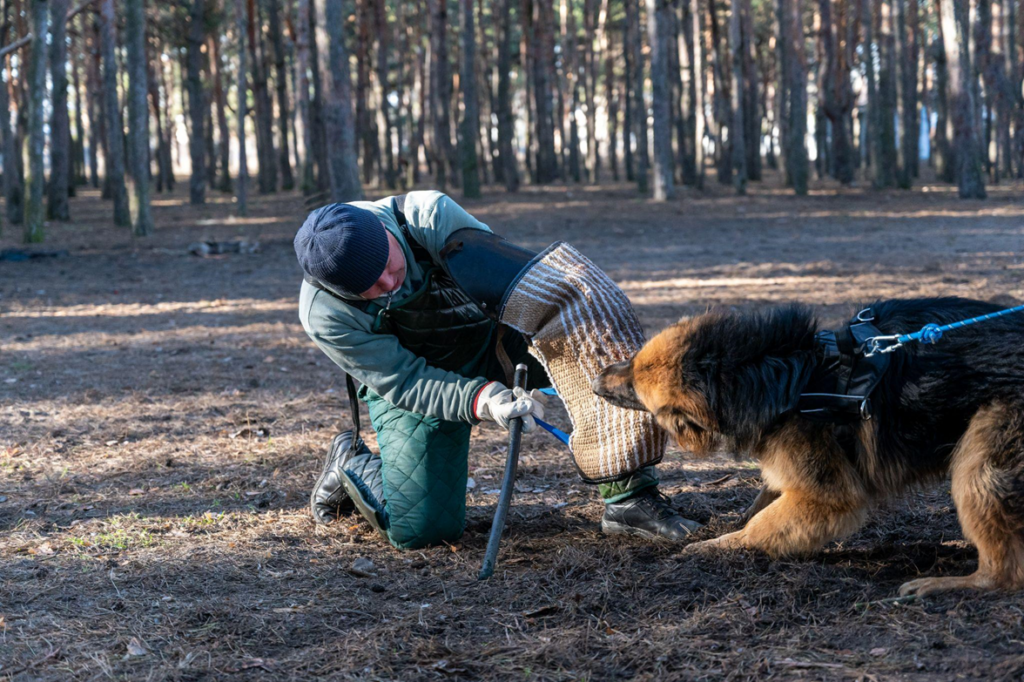A well-trained guard dog is one of the best investments anyone wanting to protect their property can make. These dogs work just like human security guards and protect any given property. However, like other working dogs, guard dogs require proper training. If not well-trained, they can quickly turn into a liability rather than a valuable asset.
In this article, we’ll provide an overview of guard dog training. Read on to learn the traits guard dogs must have, touching on temperament and drive to essential commands.
Guard Dog Training Isn’t for Beginners
Before we list the essentials of guard dog training, know that this type of dog training isn’t for beginners.
Guard dog training requires an experienced trainer who knows what they’re doing. Otherwise, training can quickly get out of control and make the dog become a liability to the owner and others. Due to the risks involved, beginners are better off with no training than inadequate training.
That said, it is essential for those wanting their dogs to become guard dogs to consult a professional dog trainer. There’s a high demand for guard dogs, especially in cities with high crime rates. Since searching for reputable dog trainers can be challenging, we recommend using Dog Academy’s guides to find the best trainers in your area; for example, they offer a detailed guide to San Antonio trainers, and they offer options for many other major cities as well.
Five Essentials of Guard Dog Training Every Dog Owner Must Know
With this out of the way, here are five essentials of guard dog training every owner must keep in mind. Knowing these will enable you to understand whether your dog is suitable for guard dog training and ask the right questions to dog trainers in your area to determine if they are a good match.
1) Temperament and Appearance
Guard dogs must have the right temperament and appearance. While many think that guard dogs should be ruthless when faced with a threat, they should be calm, courageous, intelligent, and alert. Most importantly, a good guard dog should be able to differentiate a real danger from something that simply catches their attention.

Although appearance doesn’t matter in most training types, it is a deterring factor that will make intruders think twice. The appearance is also linked to breed, which also determines temperament in most cases. Large, powerful dog breeds like the Rottweiler and German shepherd have the upper hand in guard dog training.
2) Basic Obedience
Before any protection work, a guard dog must undergo basic obedience training. This ensures that they become obedient to the owner’s commands, which is what separates a well-trained guard dog from others, especially in high-stress situations.
Basic obedience training also builds confidence in dogs and helps manage their protective instincts in public during walks and playtime. In a way, it lays the groundwork for guard dog training.
3) Socialization
Socialization is just as important as basic obedience. It is a crucial step in guard dog training that gives dogs the necessary exposure to help analyze various situations and distinguish an actual threat from something harmless.
By exposing dogs before and during guard dog training to different environments, people, and animals, dog trainers ensure a well-rounded guard dog that’s reliable and able to make precise judgments. It also makes social outings pleasant for both the dog and the owner, as the dog won’t view everyone as a potential threat.
4) Mastering Recall
Recall is often taught to dogs during basic obedience training, but it must be taken to the next level for guard dog training. A good guard dog must back off when commanded to ensure they don’t become a liability to their owner.

Ensuring that the guard dog recalls reliably also helps them remain calm when family and friends visit.
5) Consistency
Consistency goes a long way in dog training, especially with something as intense as guard dog training. Basic obedience, socialization, and recall must be practiced regularly throughout a guard dog’s employment.
By practicing all these regularly, dog trainers ensure that the guard dog will perform their duties out of positive association, not fear and anxiety.
Getting the Right Guard Dog Training for Your Dog
We’ve covered the essentials of guard dog training, from basic obedience training to the importance of reliable recall. While these are a must for every step of guard dog training, dog owners with no prior experience should consult a professional dog trainer – never start guard dog training on their own at home.
This type of dog training requires precise behavior shaping in a highly controlled manner, which often exceeds most dog owners’ expertise. Without professional guidance, guard dog training can spiral out of control and lead to behavioral issues that can take months of corrective training to undo. For these reasons, working with a professional dog trainer is essential to ensure effective guard dog training.


